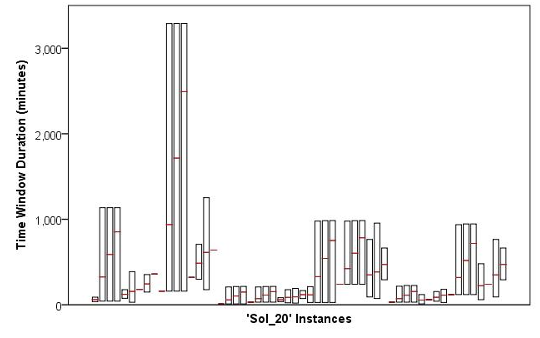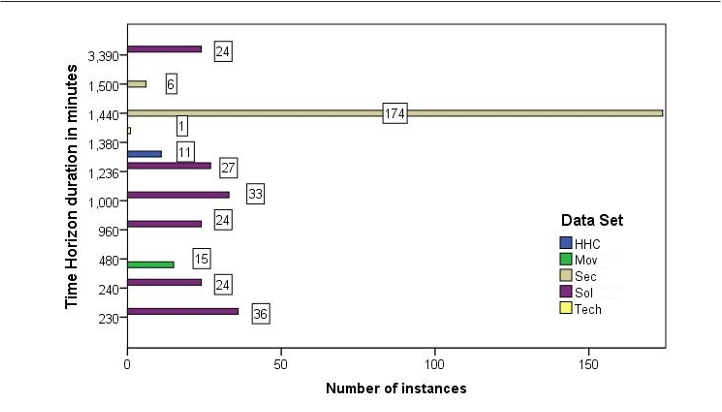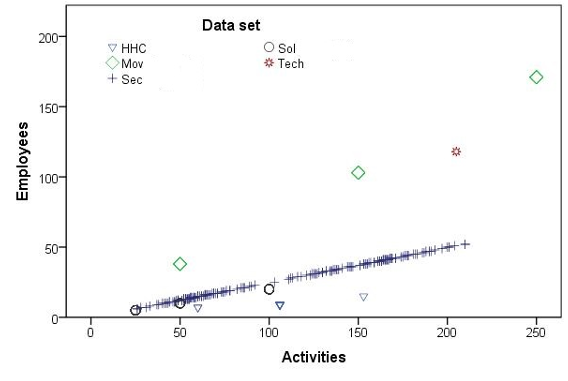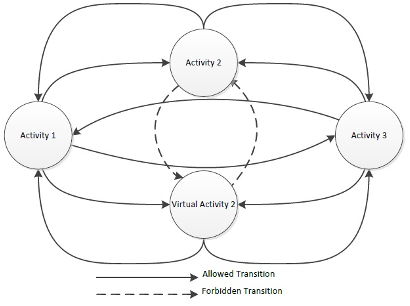




Did you find this useful? Give us your feedback
























13 citations
13 citations
12 citations
12 citations
12 citations
...The MILP model used as a reference to compare the greedy heuristic can be found in (Castillo-Salazar et al., 2014)....
[...]
...In their experiments, Castillo-Salazar et al. (2014b) used two hours as maximum computational time....
[...]
...In this study we used the benchmark data set from Castillo-Salazar et al. (2014b)....
[...]
...The deterministic greedy heuristic GHI generates better results for one half of Castillo-Salazar et al. (2014b) benchmark instances....
[...]
..., 2014) and for some small instances solvers could require 67 hours to prove optimality (Castillo-Salazar et al., 2014)....
[...]
3,211 citations
...Such instances are the ones by Solomon (1987) and Castro-Gutierrez et al (2011), which represent a total of 183 instances for these initial experiments....
[...]
...The prefixes used to identify each of the data sets are as follows: Sol refers to the 168 instances from Solomon (1987), Mov refers to the 15 instances from Castro-Gutierrez et al (2011), HHC refers to the 11 instances from Rasmussen et al (2012), Sec refers to the 180 instances from Misir et al…...
[...]
...There are a few benchmark data sets for the VRPTW, here we refer to the ones by Solomon (1987) and Castro-Gutierrez et al (2011) which we adapt for our computational experiments....
[...]
...Solomon (1987) VRPTW data set has been used broadly in the literature....
[...]
...We consider here the following data sets from the literature: (1) VRPTW instances by Solomon (1987), (2) multi-objective VRPTW instances by CastroGutierrez et al (2011), (3) home health care instances by Rasmussen et al (2012), (4) security personnel scheduling instances by Misir et al (2011) and…...
[...]
2,248 citations
1,685 citations
...Then, local heuristics based on destroy and repair moves are used to improve the solutions (Ropke and Pisinger, 2006)....
[...]
1,238 citations
...Many types of personnel scheduling problems have been tackled in the literature (Baker, 1976; Miller, 1976; Golembiewski and Proehl Jr, 1978; Cheang et al, 2003; Ernst et al, 2004; Alfares, 2004)....
[...]
1,085 citations
...If the vehicle arrives before the time window, it must wait until the time window opens to perform the delivery (Desrochers et al, 1992; Kallehauge et al, 2005)....
[...]
The authors consider some extensions for future work. Secondly, to apply a different MIP model or extend the one by Rasmussen et al ( 2012 ), seeking to include other features such as: employees capacity ( number of hours allowed to work within the time horizon ), employees breaks, and balancing the number of activities in routes.